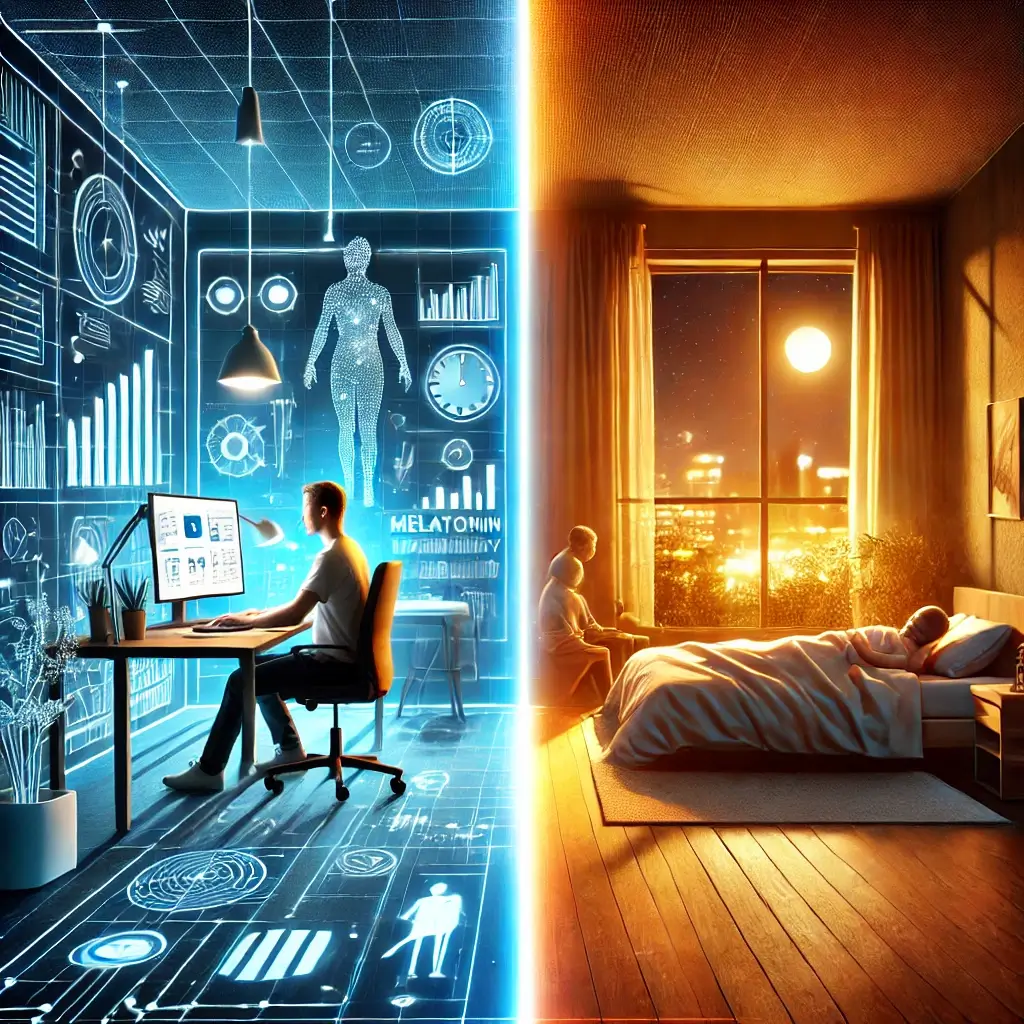The Impact of Light on Human Health and Biological Processes
The interplay between light and human health is intricate and profound. Light not only illuminates our surroundings but also regulates our biological processes, particularly the circadian rhythm—the body’s internal clock that dictates sleep-wake cycles. Exposure to natural sunlight supports alertness and productivity during the day, while the absence of light at night signals the body to rest. However, modern living often involves exposure to artificial light well into the evening hours, disrupting these natural processes.
Understanding Blue Light’s Impact on Daily Life
Blue light, emitted by traditional incandescent bulbs and electronic devices, plays a dual role in our lives. While beneficial for productivity and focus during the day, its presence at night suppresses the production of melatonin, the sleep hormone, leading to poorer sleep quality and subsequent fatigue. Research has identified the adverse effects of prolonged blue light exposure, underscoring the need for lighting solutions that adapt to the needs of the circadian rhythm.
Modern Solutions in Lighting Technology
Advancements in lighting technology have introduced options such as tunable LEDs, dimmable lights, and warm-tone bulbs, which offer the flexibility to optimize light exposure for health and performance. This article delves into the science of light and its effects on sleep and productivity, explores current innovations, and provides actionable recommendations to create a light-optimized environment.
Understanding the Science Behind Circadian Rhythm
The circadian rhythm governs sleep-wake cycles through the release of hormones like melatonin and cortisol. Cortisol peaks in the morning, stimulating wakefulness, while melatonin increases in the evening to promote sleep. Light exposure, particularly to blue wavelengths, influences this hormonal interplay by signaling the brain’s suprachiasmatic nucleus (SCN).
Research Findings on Evening Light Exposure
Research demonstrates that blue light exposure in the evening delays melatonin onset, resulting in reduced sleep quality and duration. A study by Chang et al. (2013) highlighted that participants exposed to blue light before bedtime experienced significant delays in falling asleep and reported feeling less rested the following day. Similarly, Chellappa et al. (2016) emphasized the need for minimizing blue light exposure at night to maintain healthy circadian entrainment.
Innovative Lighting Technologies for Better Health
Recognizing the impact of artificial light on health, lighting technologies now cater to the demands of both productivity and restful sleep. Below are some innovative solutions:
Exploring Tunable LED Technology
Tunable LEDs allow users to adjust the color temperature, transitioning from cool, bright light during the day to warm, dim light at night. This mimics the natural progression of sunlight and helps maintain a balanced circadian rhythm.
Benefits of Specialized Lighting Options
These bulbs emit light in the amber or red spectrum, which minimally impacts melatonin production. They are ideal for bedside lamps or nightlights, creating an environment conducive to sleep.
Advanced Smart Lighting Solutions
Smart bulbs integrated with mobile apps enable personalized lighting schedules. Users can program these systems to provide energizing light in the morning and soothing, melatonin-friendly light in the evening.
Natural Light Simulation Technologies
For those who work indoors, full-spectrum daylight bulbs provide light similar to natural sunlight, boosting alertness and reducing fatigue during the day.
Optimizing Your Light Environment
In addition to choosing the right light bulbs, consider these strategies to enhance your environment for both sleep and productivity:
The Importance of Natural Morning Light
Start your day with natural sunlight. Morning light exposure not only wakes you up but also sets your circadian clock, making it easier to wind down in the evening.
Managing Evening Light Exposure
Use screen filters or blue-light-blocking glasses to minimize blue light exposure from electronic devices after sunset.
Evening Lighting Strategies
Transition to dim, warm lighting one to two hours before bed to signal your body that it’s time to prepare for sleep.
Workplace Lighting Optimization
In workspaces, use bright, cool light to mimic daylight, enhancing focus and productivity.
Final Thoughts on Light Management
Light is a powerful regulator of sleep and productivity. Modern innovations in lighting technology provide practical solutions to balance these dual needs. By incorporating tunable LEDs, amber bulbs, or smart lighting systems into your environment, you can create a setup that supports both restful nights and productive days. Complement these efforts with strategies like morning sunlight exposure and evening light management for optimal results.
The Path to Better Light Management
Prioritizing light hygiene can significantly improve your quality of life, ensuring that your lighting choices align with your body’s natural rhythms. With the right tools and habits, you can illuminate your path to better sleep and enhanced productivity.
Research Citations
Chang, A. M., Jung, S. Y., Kim, J. A., & Duffy, J. F. (2013). Exposure to evening light and sleep: A review of the evidence and guidelines for healthy circadian entrainment. Sleep Medicine Reviews, 17(4), 263-275.
Chellappa, S. L., Nusrat, S., & Jaggi, H. S. (2016). Light-emitting diodes (LEDs) and melatonin suppression: Risk factors and safe use. Indian Journal of Ophthalmology, 64(7), 462.
